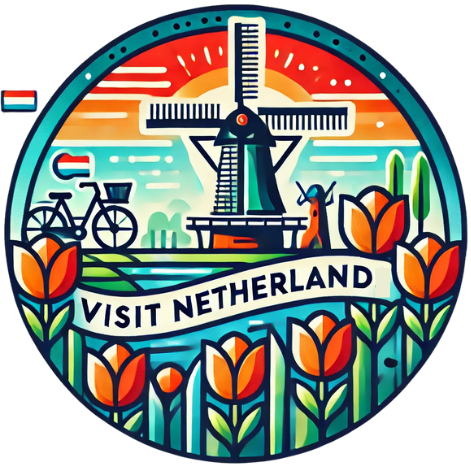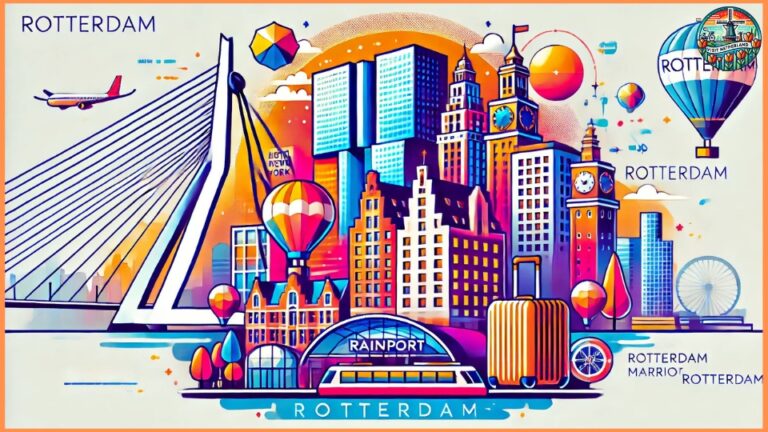Visa for the Netherlands: The Schengen Visa Guide
Famous for its beautiful canals, rich culture, and historic landmarks, the Netherlands is one of the favorite destinations among tourists. Before going to Amsterdam, The Hague, or Rotterdam, you may find yourself well in need of a Schengen visa. This article is going to guide one through the process of applying for a visa to the Netherlands, explain the various types of visas available, and describe the requirements necessary to have such an application considered successfully.
What is a Schengen Visa?
The Schengen Visa is a visa for limited stays that allows traveling in all the countries of the Schengen Area for 90 days out of a period of 180 days. In simple terms, the Schengen Area includes 27 European countries, among which is the Netherlands. Such a visa allows free travel into and around these countries without passing through border control at each country.
The Netherlands is a member of the Schengen Agreement, and this means that many travelers will need to apply for a Schengen visa before entering.
Who Needs a Schengen Visa to Visit the Netherlands?
To start with, one should be certain whether this is even necessary for a Schengen visa to travel to the Netherlands. Members of certain nations, like the United States, Canada, and Australia, have access to travel visa-free within the Schengen Area for the maximum period of 90 days in any 180-day period. However, citizens from other countries need to apply for a Schengen visa in advance of their arrival in the Netherlands.
Just in case you are going to visit and you are not sure whether you need a visa, well, the best thing would always be to check at the official website for Netherlands immigration, or contact the nearest Dutch Embassy or consulate in your country.
Types of Schengen Visas for the Netherlands
When applying for a Schengen visa, there are different types depending on your purpose of visit. Here are the most common:
1. Short-Stay Visa (Type C)
This is the most common type of Schengen visa for tourists and business travelers. The Type C visa allows you to stay in the Netherlands and the Schengen Area for up to 90 days within 180 days. Whether you’re planning a vacation, attending a business meeting, or visiting family and friends, this is the visa you’ll most likely need.
2. Transit Visa (Type A)
If you have a connecting flight through a Dutch airport and you are a citizen of a country that requires a visa, you’ll need a Type A transit visa. This visa allows you to transit through the international zone of Dutch airports without entering the Schengen Area. Keep in mind that this visa is only valid for airport transit and does not permit you to leave the airport.
3. Long-Stay Visa (Type D)
If you plan to stay in the Netherlands for more than 90 days, you’ll need to apply for a long-stay visa, also known as a Type D visa. This visa is typically required for those moving to the Netherlands for work, study, or family reunification. The application process for a long-stay visa is more complex, often involving additional documentation and approval from the Dutch Immigration and Naturalisation Service (IND).
Visa Requirements for the Netherlands
To successfully obtain a Schengen visa for the Netherlands, you’ll need to meet specific requirements and submit certain documents. Here’s a detailed breakdown of what’s required:
1. Completed Visa Application Form
You must fill out the Schengen visa application form accurately and completely. Ensure that all details match the information on your travel documents and other submitted materials.
2. Valid Passport
Your passport should be valid for at least three months beyond your planned stay in the Netherlands and the Schengen Area. It should also have two blank pages for visa stamps.
3. Passport-Sized Photos
Two recent passport-sized photos (35x45mm) are required. These must follow strict guidelines regarding background, facial expression, and size. It’s recommended to get these photos taken professionally to avoid delays.
4. Travel Itinerary
You will need to submit a copy of your flight reservations and hotel bookings to demonstrate your travel plans. Some consulates require you to show a fully confirmed round-trip ticket.
5. Proof of Financial Means
You must show that you have sufficient funds to cover your stay in the Netherlands. This can be demonstrated through bank statements, pay stubs, or a letter of financial sponsorship from someone in the Netherlands.
6. Travel Insurance
Applicants must have valid travel insurance that covers the entire Schengen Area. The insurance must cover medical expenses and emergencies up to €30,000.
7. Letter of Invitation (if applicable)
If you’re visiting family or friends in the Netherlands, you may need a letter of invitation from your host. This letter should detail the purpose of your visit and include your host’s contact information.
How to Apply for a Schengen Visa for the Netherlands
Step 1: Determine Which Type of Visa You Need
As mentioned above, the type of visa you need depends on the purpose and length of your visit. Ensure you choose the right visa to avoid any delays or rejections.
Step 2: Schedule an Appointment
Once you have gathered all the necessary documents, schedule an appointment at the Dutch embassy or consulate in your country. Be aware that wait times for appointments can vary depending on the country and time of year.
Step 3: Attend the Visa Interview
During your interview, you’ll need to submit your application form, passport, photos, and supporting documents. You may also be asked to provide biometric data (fingerprints and photographs) during this appointment.
Step 4: Pay the Visa Fee
The usual Schengen visa for adults is €80. Children between 6 years and 12 years pay the reduced price of €40, and under 6 years, admission is free. Other service fees vary depending on the consulate.
Step 5: Wait for Processing
The period taken to process a visa usually varies, but usually, an application takes 15 calendar days at the Dutch embassy. Advice is given to apply well in advance of your intended trip to account for any unexpected delays.
What to Do If Your Visa Is Denied
In case of rejection, the Schengen visa for the Netherlands would not be issued. Never be nervous about these circumstances. Because there is another possibility of submitting an appeal on this decision. The Dutch embassy would state in writing the very reason that had been behind the visa denial. Complementary documents or corrections regarding these reasons may be submitted and thus file an appeal in a duration of 90 days from the notice of denial.
Tips for a Successful Schengen Visa Application
Apply Early: Do not wait until the last minute. It is highly advisable to start your application process at least three months in advance of your trip.
Check Your Documents: Ensure all your documents are accurate, complete, and precisely meet the Dutch consulate requirements.
Get Professional Photos: Poor passport photos not in conformance with the specifications are one of the most common reasons for delays or rejections in visas.
With all these steps followed properly and making sure that all the documents are ready and complete, you will be well on your way to a successful acquisition of a Schengen visa for the Netherlands.







